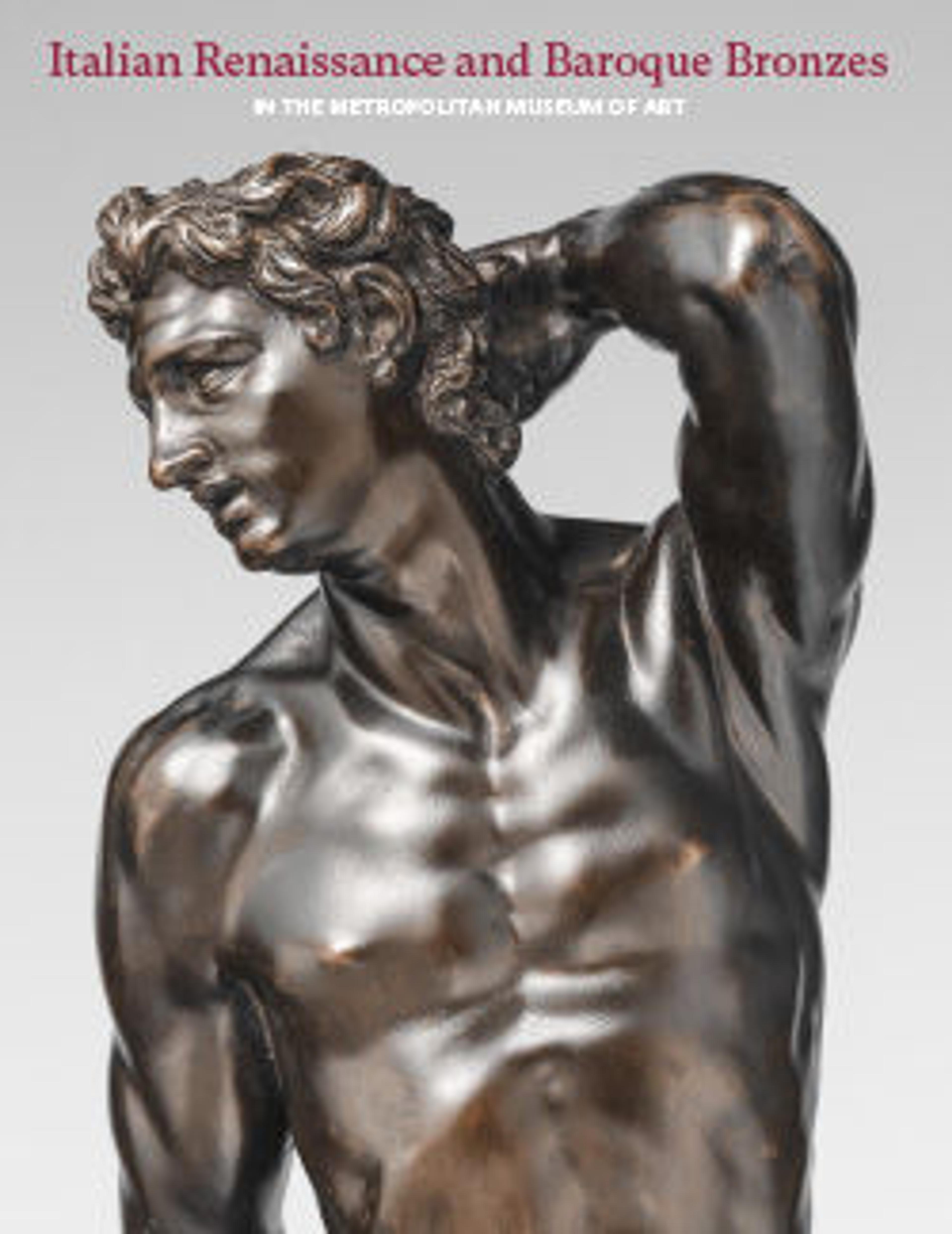Atlas Supporting a Vessel
Patrick De Winter observed that in L’antiquité expliquée (1719–22), the antiquarian Bernard de Montfaucon included the engraving of an example similar to this one, although masquerading as Hercules with the addition of a lionskin.[1] The Met’s vessel, with acanthus, now suggests an inkwell, but it would leak, the soldered join attaching it having loosened.[2] A marginally better Atlas in the Bargello shoulders an oil lamp, and a vigorously chased one recently on the market had an inkwell besides.[3] Ours is distinguished by a rude gouging-out around the sex organs and the arbitrary shaping of the lumbar region, done with a sharp tool in the wax before casting.
The figure reappears on the top tier of the statuettes that embellish a little-discussed candle stand in the Fine Arts Museums of San Francisco. Whether that work is a product of the Severo shop is open to question. It is odd that the straining Titan would bear the smallest, topmost zone. Anthony Radcliffe pointed out that the Cleopatra on it, a different model from The Met ones (cat. 34), derives from an invention by Baccio Bandinelli first mentioned in 1544.[4]
-JDD
Footnotes
(For key to shortened references see bibliography in Allen, Italian Renaissance and Baroque Bronzes in The Metropolitan Museum of Art. NY: The Metropolitan Museum of Art, 2022.)
1. De Winter 1986, p. 87, fig. 26.
2. The alloy was identified as a leaded brass with some tin. R. Stone/TR, 2010.
3. De Winter 1986, p. 102, fig. 61; for the bronze with Julius Böhler of Munich, see Maastricht 2016, p. 202.
4. FAMSF, 61.35; see Radcliffe 1986, p. 185.
The figure reappears on the top tier of the statuettes that embellish a little-discussed candle stand in the Fine Arts Museums of San Francisco. Whether that work is a product of the Severo shop is open to question. It is odd that the straining Titan would bear the smallest, topmost zone. Anthony Radcliffe pointed out that the Cleopatra on it, a different model from The Met ones (cat. 34), derives from an invention by Baccio Bandinelli first mentioned in 1544.[4]
-JDD
Footnotes
(For key to shortened references see bibliography in Allen, Italian Renaissance and Baroque Bronzes in The Metropolitan Museum of Art. NY: The Metropolitan Museum of Art, 2022.)
1. De Winter 1986, p. 87, fig. 26.
2. The alloy was identified as a leaded brass with some tin. R. Stone/TR, 2010.
3. De Winter 1986, p. 102, fig. 61; for the bronze with Julius Böhler of Munich, see Maastricht 2016, p. 202.
4. FAMSF, 61.35; see Radcliffe 1986, p. 185.
Artwork Details
- Title: Atlas Supporting a Vessel
- Artist: Circle of Severo Calzetta da Ravenna (Italian, active by 1496, died before 1543)
- Date: mid-16th century
- Culture: Italian, probably Ravenna
- Medium: Bronze
- Dimensions: Overall (confirmed): 7 3/8 × 2 3/8 × 2 3/4 in. (18.7 × 6 × 7 cm)
- Classification: Sculpture-Bronze
- Credit Line: Gift of Irwin Untermyer, 1971
- Object Number: 1971.171
- Curatorial Department: European Sculpture and Decorative Arts
More Artwork
Research Resources
The Met provides unparalleled resources for research and welcomes an international community of students and scholars. The Met's Open Access API is where creators and researchers can connect to the The Met collection. Open Access data and public domain images are available for unrestricted commercial and noncommercial use without permission or fee.
To request images under copyright and other restrictions, please use this Image Request form.
Feedback
We continue to research and examine historical and cultural context for objects in The Met collection. If you have comments or questions about this object record, please complete and submit this form. The Museum looks forward to receiving your comments.
